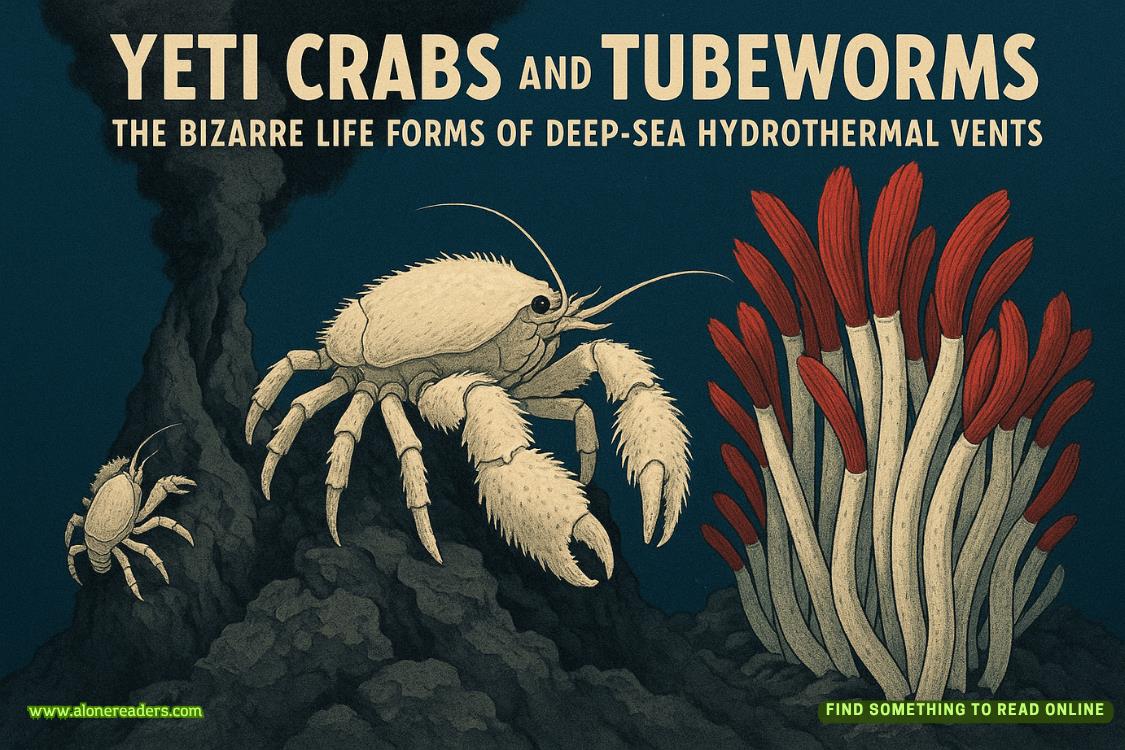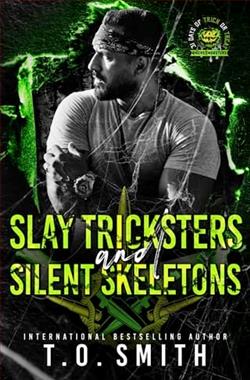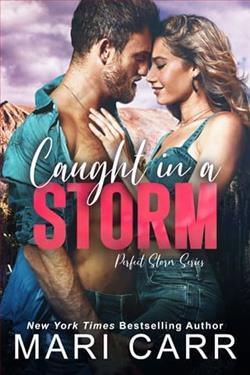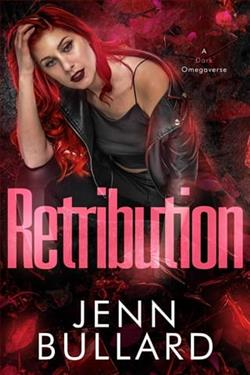Page 35 of Those Empty Eyes
“I need to show you something inside,” he said.
“Inside your cabin?” she asked.
“Yes. It will just take a minute.”
“Am I in trouble?”
“Not yet,” Mr. Lolland said in a soft voice. “But you will be if you tell anyone about this. Tonight is our little secret.”
She swallowed hard as Jerry Lolland guided her into his cabin.
Present Day
CHAPTER 19
Manhattan, New York Sunday, January 15, 2023 8:45 p.m.
TRACY CARR PUT THE FINAL TOUCHES ON HER ARTICLE, RESISTED THE urge to read through it one more time to make additional changes, attached it to the e-mail, and hit SEND. There was always a moment of panic after e-mailing an article to her editor and knowing that it was out of her control. Knowing that her editor might read her work and think the content was worthless and the writing amateurish. This worry arose from an irrational mixture of neurosis and OCD—the curse of just about every writer she knew—but not from a lived experience. In the five years she’d worked as an investigative reporter for the New York Times, her editor had never rejected any of Tracy’s articles.
Tracy carried some level of clout as a reporter, and she was sure that helped. After breaking the story about the Quinlan family murders ten years earlier when she worked as a local reporter in Virginia, Tracy rode that fame and left Channel 2 News out of Richmond for greener pastures. Recruited first by the legendary television newsmagazine host Mack Carter, Tracy was a correspondent for American Events for a number of years before her rise to television stardom stalled when a young journalist named Avery Mason stormed onto the scene and overshadowed anything Tracy had ever accomplished in journalism. Avery Mason went on to take over American Events, a gig Tracy had been in contention for, and the cutthroat environment of television news proved too daunting for her. Tracy instead took to, and flourished in, the new era of reporting: the Internet. Her stories had been so powerful, and her social media following so large, that the New York Times hired her to write about crime. Tracy won accolades for an investigative piece she did on the bribery of a sitting US senator that included Tracy going undercover as a small-business owner attempting to procure favorable tax breaks and building permits to get her business off the ground, all in exchange for healthy campaign donations. When the story broke, the accused senator was forced to resign in disgrace.
Writing for the Times was Tracy’s day job. Her real passion, however, was true crime. But the gig at the newspaper lent Tracy credibility that many of her true-crime cohorts lacked. And writing for one of the leading papers in the country added to her digital platform. Her social media accounts boasted five million followers, and her self-produced videos covering true crime were must-see events when she released them. If a suburban mom was murdered or new developments came to light about a girl who’d gone missing years before, Tracy Carr was immediately on the story and offering updates to her millions of followers. The best part was that as long as she got her work done for the newspaper, her editor didn’t care what Tracy did in her spare time.
Tracy closed out of her e-mail account and pulled up the video editor on her desktop to rewatch the footage that she would drop tonight. She had lured her fans with teasers for the past month as the ten-year anniversary of the Quinlan family shootings approached, and had even returned to McIntosh, Virginia, for the first time in years to capture the perfect footage. She pressed PLAY and watched the clip to see if any last-minute edits were needed.
Tracy stood in front of the two-story home. The cedar sported a fresh coat of paint, applied the previous spring. Throughout the summer, the manicured lawn glowed a lush green hue compliments of a sprinkler system that ran like clockwork. Now, in the dead of winter, a snowplowing company routinely cleared the driveway and sidewalk after each snowfall. Without any previous knowledge of the home’s history, it would be impossible to know that a decade earlier it was the site of a triple homicide and had sat vacant ever since.
Tracy raised the microphone to her mouth and looked into the camera.
“I’m Tracy Carr and behind me is the infamous home where, ten years ago, the brutal killing of the Quinlan family took place. On that fateful night, Dennis, Helen, and thirteen-year-old Raymond Quinlan were shot in the middle of the night. I was the first reporter on the scene that night, breaking a story that would eventually rock not just the town of McIntosh, Virginia, but the entire country.”
A faded transition took viewers back to the night of January 15, 2013, where a then thirty-two-year-old Tracy Carr interviewed the neighbor who had first called 911 to report shots fired inside the Quinlan home. The footage progressed to the front door opening and a female officer—unknown at the time, but now familiar to true-crime buffs as Donna Koppel, the officer who would eventually provide key testimony in the case of Alexandra Quinlan versus the state of Virginia—walking into the hot lights of both Tracy’s television camera and the spotlights the McIntosh Police Department had erected. Officer Koppel led Alexandra Quinlan, hands cuffed behind her back and her eyes empty in a thousand-yard stare, out of the house. In the days that followed, that image of Alexandra Quinlan made its way onto every newscast in the country.
The video faded. Alexandra Quinlan’s face slowly blurred as the footage transitioned back to Tracy Carr.
“Ten years have passed since I stood outside this house knowing only that shots had been fired within. At the time Alexandra Quinlan was taken into custody, I knew only what the rest of the world knew. But then I started digging. Soon, I uncovered startling details about that night. The empty eyes Alexandra offered the camera have continued to haunt those of us who seek the truth. Had a teenaged girl miraculously survived the night an armed intruder entered her home and killed the rest of her family? Or, had those empty eyes been a dead giveaway that Alexandra Quinlan had not escaped the shotgun blasts that killed her family, but had instead been the one who pulled the trigger?”
Tracy walked up the driveway of the home.
“For ten years questions have loomed. For a decade the Quinlan home has sat vacant, yet perfectly maintained. We know that the property fell briefly into foreclosure in the months after the murders but was then purchased by an anonymous trust. The house has been meticulously maintained ever since. Yet, when I look into who hired the landscaping company that maintains the grounds during summer and plows the snow in the winter, or the company hired to paint the home last year, or the company that installed the sprinkler system, I run into nothing but dead ends. Similarly, when I approach the utility companies to see who pays the electric and gas bills, I’m stonewalled.
“We know that the property came out of foreclosure soon after Alexandra Quinlan won her case against the state of Virginia, a settlement that awarded her millions of dollars. We’ve suspected that Alexandra is behind the anonymous purchase, and many of you armchair detectives at home have searched for proof. But protected by a small fortune and an army of attorneys, Alexandra Quinlan has not only managed to keep the trust anonymous, but to stay hidden for the better part of a decade. No one has seen or heard from Alexandra since she walked out of the courtroom the day the jury made her a very rich woman.
“There have been reported sightings from California to New York, and as far as London, England. But every one of those leads has turned up exactly nothing. Alexandra Quinlan up and vanished years ago. Despite my best efforts, and nonstop searching by many of you at home, Alexandra has managed to stay hidden ever since. On the ten-year anniversary of the shootings, my question is this . . .”
Tracy looked directly into the camera.
“What are you hiding, Alexandra?”
Tracy turned away from the camera, walked to the front door of the Quinlan home, and knocked on it. She waited a moment as if someone might answer, then turned back to the camera.
“As we mark the tenth anniversary of the Quinlan family killings, we continue to search for answers. We continue to search for the truth. We continue to search for Alexandra Quinlan. If she is the innocent victim she claimed to be during the trial that netted her millions, why did she go into hiding after the case was settled? Perhaps there is a simple explanation, and it is this: Instead of an innocent victim, Alexandra Quinlan is a ruthless killer who not only got away with murder, but millions on top of it.”
Tracy walked off the front stoop until she was close to the camera. Her breath was a white vapor in the cold January air.
“I’m Tracy Carr, and I promise you that as the tenth anniversary of the Quinlan family murders comes and goes, I will spend every day continuing to search for answers. With your help, maybe we’ll find them. With your help, maybe we’ll find Empty Eyes. We know she’s out there somewhere.”
Tracy stopped the video. Satisfied, she uploaded it to her social media accounts. Before midnight, it had racked up three million views. Two weeks later, twenty-two million people had watched it. The world, or at least a select corner of it, was still obsessed with Alexandra Quinlan.















